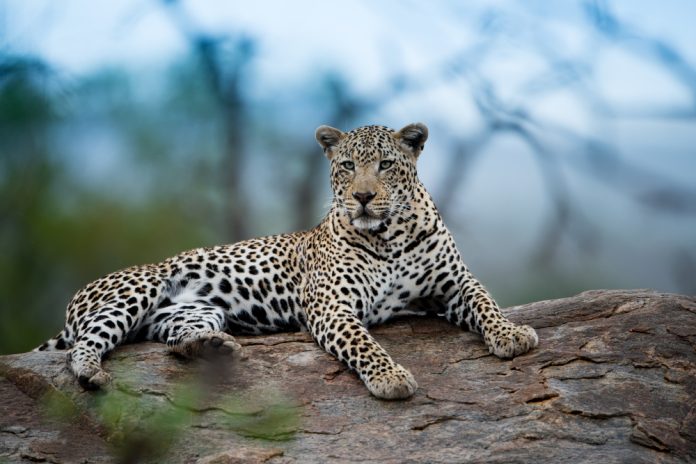The world we live in today is becoming less home to animals, and their numbers are declining due to our overabundant consumption of resources. While many animals are still in danger due to human activities that harm them, some have been saved. The International Union for Conservation of Nature estimates that over 41,000 species are currently in danger of going extinct. These top 10 endangered species across the globe need to be saved for generations to come.
1. Amur Leopard
Only about 100 Amur leopards remain in the wild, making it one of the rarest big cats in the world. Since 1996, the number of leopard subspecies in the wild appears to be stable and growing, but they remain critically endangered. And with good reason: Amur leopards are currently restricted to a comparatively small area in the far east of Russia and northeastern China. There are several threats to the survival of the remaining Amur leopards, including habitat loss and fragmentation, a lack of prey, and transportation infrastructure like roads. Around 75% of their home range lies in protected areas in Russia and China, and they are also moving into suitable habitats outside of these protected areas.
2. African Elephants
One of the two species of African elephants, the elusive forest elephant lives deep within the humid, dense forests of West and Central Africa. Due to their shy nature, it is unknown how many wild African forest elephants there are, but they are a critically endangered species and their population has decreased by an estimated 86% over the past 31 years. The primary cause of the decline is poaching, which is common, extensive, and intense, particularly in Central Africa. The loss of habitat and changes in land use for agriculture and other purposes, combined with elephant poaching, has led to fragmented habitats and increased human-elephant conflict.
3. Black Rhinos
Large-scale poaching caused dramatic declines in black rhino populations between 1960 and 1995. Only 2% made it through the terrible assault of the past. With only 5,630 black rhinos remaining in the wild, the IUCN still classifies them as critically endangered. The western black rhino was declared extinct in 2011, leaving three subspecies of the species remaining today. Currently, just four countries—Kenya, Namibia, South Africa, and Zimbabwe—are home to 95% of the world’s black rhino population. Poaching for rhino horn remains the greatest threat to the remaining population; in the past ten years, poachers have killed nearly 10,000 African rhinos to supply the illegal rhino horn trade.
4. Javan Rhinos
Due to poaching and habitat loss, Javan rhino populations, which were formerly widespread throughout Southeast Asia, have drastically decreased. Only the Indonesian island of Java is home to the 75 individuals that make up the rarest wild population of rhinos, known as Javan rhinos. The final remaining home for Javan rhinos is the Ujung Kulon National Park, which is recognized as a World Heritage Site. However, the Arenga palm invasion is also a problem in the area, depriving the rhinos of food and habitat. In addition, diseases, poaching, natural disasters, and possible inbreeding pose a serious threat to the tiny Javan rhino population, making it extremely vulnerable to extinction.
5. Mountain Gorillas
A subspecies of the eastern gorilla, the mountain gorilla inhabits two isolated groups in high-altitude forests in the volcanic mountain regions of Rwanda, Uganda, and the Democratic Republic of the Congo, as well as the Ugandan Bwindi Impenetrable National Park. In addition to extreme poverty, the Virunga Landscape has a history of political unrest. Since over 500,000 people currently reside close to mountain gorilla habitats in search of food, shelter, and space, this poses a serious threat to the population of these great apes. With fewer than 1,000 in the wild, mountain gorillas are currently classified as an endangered species. Nonetheless, there are still several threats that could impede this species’ ability to recover.
6. Saola
The saola, also known as the Asian unicorn, is one of the rarest mammals on Earth and, as such, it is included in the list of the most endangered animals worldwide in 2022. It is rarely seen and was first found in Vietnam’s Annamite Range in 1992. The IUCN estimates that there are less than 750 saolas in the world, and it’s likely much fewer. However, no official surveys have been conducted to determine exact population numbers.
7. Hawksbill Turtles
One of the seven species of marine turtles, the Hawksbill turtle inhabits nearshore tropical and subtropical waters in the Pacific, Indian, and Atlantic oceans. Since marine turtles are the real ocean explorers, it is challenging to determine their actual population size. Nesting turtle numbers are estimated to be between 20,000 and 23,000. The illegal trade in hawksbill shells and products, accidental capture in fishing gear, degradation of nesting habitat, and damage to coral reefs have all contributed to an 80% decline in hawksbill turtle populations worldwide over the past 30 years. Future threats posed by humans, like plastic pollution, climate change, and rising sea levels, may further exacerbate this species’ decline. Hawksbill turtles are classified as critically endangered at present.
8. Vaquita
The vaquita is the world’s smallest and most endangered marine mammal. It has been listed as critically endangered by the IUCN since 1996, and despite massive conservation efforts, experts believe there may only be about 10 remaining individuals. The largest danger to them comes from the illicit fishing of totoaba, a large fish that is prized for its swim bladder. Vaquitas drown when they unintentionally become tangled in the gillnets intended for totoaba and are unable to swim to the surface to breathe. Gillnet use in vaquita habitat was outlawed in July 2016 as a result of conservation efforts, but illegal fishing is still going on and the threat still exists.
9. Sunda Island Tiger
The smallest tiger subspecies in the world, weighing up to 140 kg, is the Sumatran or Sunda Island tiger. They are unique to the Indonesian island of Sumatra and have been estimated at 600 in the wild. The human population of south-east Asia increased from 357 million in the 1980s to approximately 668 million in 2020. The number of tigers has also decreased as a result, along with the areas in which they live. Sunda Island tigers are more likely to come into contact with humans as human settlements expand in the area, which could increase human-tiger conflict. Their survival is also seriously threatened by tiger poaching and the illegal trade in tiger products and parts.
10. Yangtze Finless Porpoise
As the only freshwater porpoise left in existence worldwide, the Yangtze Finless Porpoise stands out among its family. Currently found in China’s Yangtze River, this aquatic mammal is classified as a critically endangered species. Although the Yangtze River is essential to the healthy functioning of ecosystems, many animal species that call this region home are suffering as a result of years of environmental degradation, overfishing, and water pollution. Freshwater dolphin sightings have been nonexistent for the past 20 years, although Yangtze river dolphins used to coexist with finless porpoises. Regretfully, this may serve as another severe warning of what many endangered species—including the Yangtze finless porpoise—may have to face soon.
On a personal level, we can actively aid in the protection of these species by diligently spreading knowledge about them, lending our support to conservation organizations, and purchasing sustainable goods. Individuals can take practical measures such as promoting anti-poaching efforts, reducing plastic use, and engaging in responsible tourism. Protecting these species also requires reporting illicit activity and maintaining respect for wildlife habitats. Every individual action, no matter how small, contributes to the broader effort to save these endangered species for future generations.
Protecting habitat must be our top priority as a society, and we must also enforce strong anti-poaching laws, involve local people in conservation initiatives, and work with other nations. Mitigating the effects of climate change is crucial. Sustaining global biodiversity and protecting these endangered species will require a comprehensive strategy that includes robust laws and policies as well as sufficient funding for conservation initiatives.





























